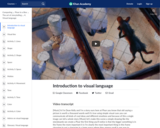
Welcome to Visual Language.
- Subject:
- Applied Science
- Arts and Humanities
- Computer Science
- Graphic Arts
- Material Type:
- Lesson
- Provider:
- Khan Academy
- Provider Set:
- Pixar
- Author:
- Disney Pixar
- Khan Academy
- Date Added:
- 07/14/2021


Welcome to Visual Language.

Overview of common vitamins and minerals that are important to human health.
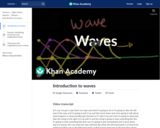
Introduction to transverse and longitudinal waves. Created by Sal Khan.

Pamela introduces arrays, a nifty way to store a sequence of multiple values in one variable.

An intro to Games and Visualizations
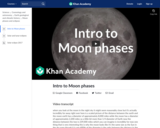
The Moon and the sun look roughly the same size in the sky because although the sun’s diameter is ~400 times greater than the Moon’s, the sun is ~400 times farther away from the Earth as the Moon is! The Moon goes through phases because as it rotates around the Earth, different parts of the Moon are made visible to us from the sun’s light. Created by Sal Khan.

Pamela introduces objects, a way to store a bag of properties in a single variable.

Jessica Liu explains how to use variables to hold on to a value to use later. Variables are an important part of programming, so pay close attention!

Sophia shows how to repeat code in your program, using while loops.

Introduction to Hooke's Law. Created by Sal Khan.

Basic overview of hormones and the endocrine system.

Basic overview of hormones and the endocrine system. Created by Sal Khan.

The difference between vectors and scalars. Introduction to distance, displacement, speed, and velocity. Created by Sal Khan.
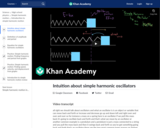
David defines what it means for something to be a simple harmonic oscillator and gives some intuition about why oscillators do what they do as well as where the speed, acceleration, and force will be largest and smallest. Created by David SantoPietro.

Intuition behind formula for thermal conductivity.
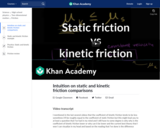
Why static friction is harder to overcome than kinetic friction. Created by Sal Khan.

We analyze the inverting op-amp configuration, doing all the algebra from first principles. Created by Willy McAllister.

Ionic bonds result from the electrostatic attraction between oppositely charged ions, which form when valence electrons are transferred from one atom to another. Created by Sal Khan.

An overview of JOINing related tables

An overview of joining related tables with left outer joins